Want to spend an extended period of time traveling Chile but have heard it's an expensive place? Well, here's the low-down on how we managed to travel Chile for a full month on less than $50 a day. Our itinerary was quite flexible throughout, although we did designate the places that we definitely wanted to go and see.
Introduction
I had made it through eight months of teaching English in a rural town in Chile, about three hours south of Santiago, and was ready to do some exploring. Ramone, my significant other, flew down to meet me in Santiago to begin our travels. Our plan? One month in Chile and then one month in Peru. Our budget? Less than $1,500 per month.

We traversed a large swath of Chile, zig-zagging down south to the beginning of Patagonia, and then heading to the desert in the north before crossing over into Peru.
Our Priorities
Chile is a long, thin country with a whole lot of varying landscapes. There's no way we could cover everything, so we had to figure out our priorities while traveling in Chile:
It's noteworthy to state that Chile is one of the more expensive countries in South America (especially the farther south you go), and some of the most gorgeous places are only accessible through going through a tour group or renting a car.
So if you're using public transit like us, buses are the cheapest way to travel, although you can get decently cheap domestic flights as well. But it also means that sometimes you either have to suck up taking a tour or miss out on some of the adventures.
Our Itinerary in Chile
Our Budget
Total of What We Spent: $1,300 apiece (includes everything except the flight to/from Chile and the U.S.). This equals out to $44 a day.
To be honest, I didn't fully keep track my expenses. If anything, the number above is an over-estimate. We tended to trade on and off who paid for what, rather than splitting everything down the middle, so things may not always have fallen evenly.
We also splurged on stuff that I normally wouldn't have traveling alone or with friends. In Santiago and Valdivia we bought AirBnb's, and when we stayed in hostels in Puerto Varas and San Pedro we chose to take a private room. After all, I hadn't seen my boyfriend in eight long months.
So, although this is still pretty inexpensive for traveling, we could've potentially spent even less! We didn't camp out for the month or anything, although we did do a Workaway program for two weeks, which helped out a lot with costs.
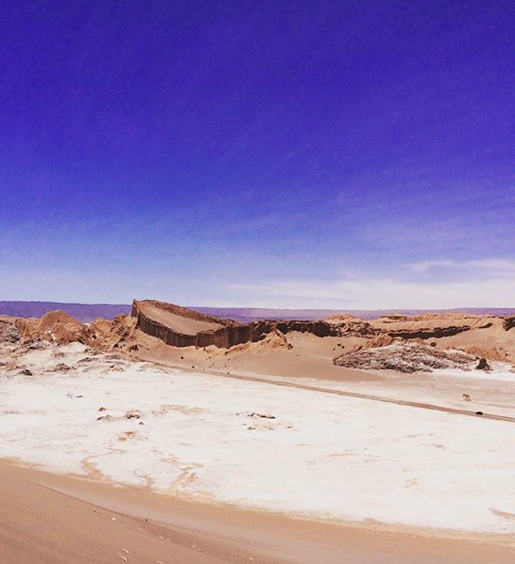
San Pedro de Atacama
Basic Costs in Chile
In general, a good marker for currency is the 1.000 Chilean peso (CLP), which I find easiest to round to be about $1.50 (at the time I was there, $1 equalled about 600 pesos). So, 10.000 CLP is ~$15.
How We Didn't Bust the Piggy Bank
Here're some of the simpler things we did so that we didn't spend a crazy ton of money traveling in Chile:
The Beginning: Santiago
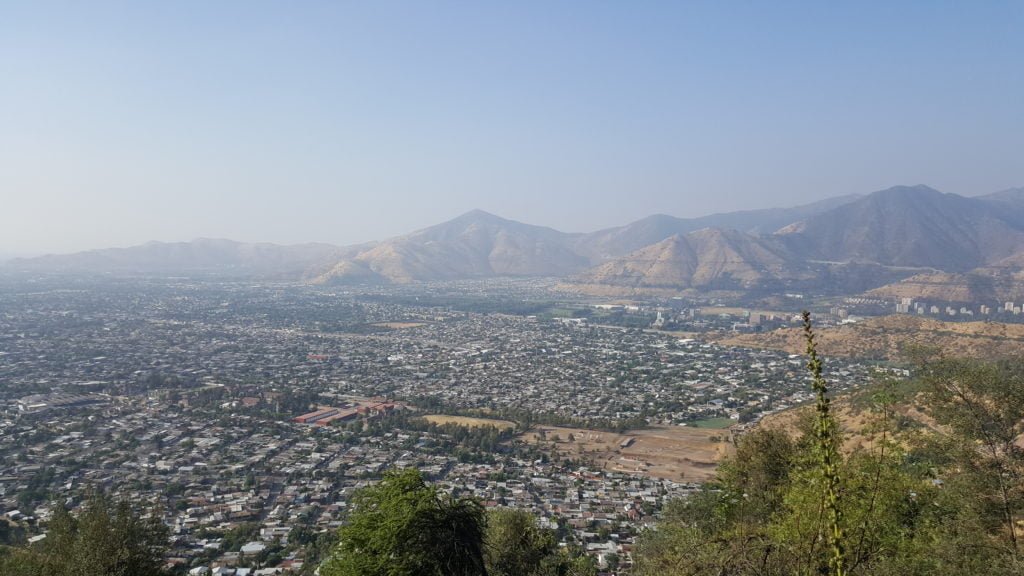
Ah, good 'ole Santiago. Smoggy, surrounded by the snow-tipped Andes Mountains, and so much sprawl. Santiago has it all, and there's a lot to do.
How We Got There
I traveled by bus from where I had been staying in Chile; Ramone flew in by plane. The bus to Santiago from Curicó (near where I was staying) is cheap: 3.500 CLP one way, and a little less than a four hour ride.
I had been to Santiago multiple times before Ramone arrived, so I had already visited a lot of places, but with a limit of five days we couldn't do everything. Biggest regret? Not bringing him to Valparaíso, a small, artsy port city only an hour and a half away by bus.
Highlights
I arrived a day before Ramone and snagged the AirBnb on General Jofre in the San Isidro neighborhood: centrally located, but in a quieter area. If you want to stay where the action is, there are plenty of lively hostels in the Bellavista neighborhood.
Unfortunately for us, Ramone's luggage had gotten lost, and so we had to take out a portion of our second day to go back to the airport to pick up his backpack. The first day, we relaxed; I cooked, we walked over to the Santa Lucia hill, and drank some wine and caught up.
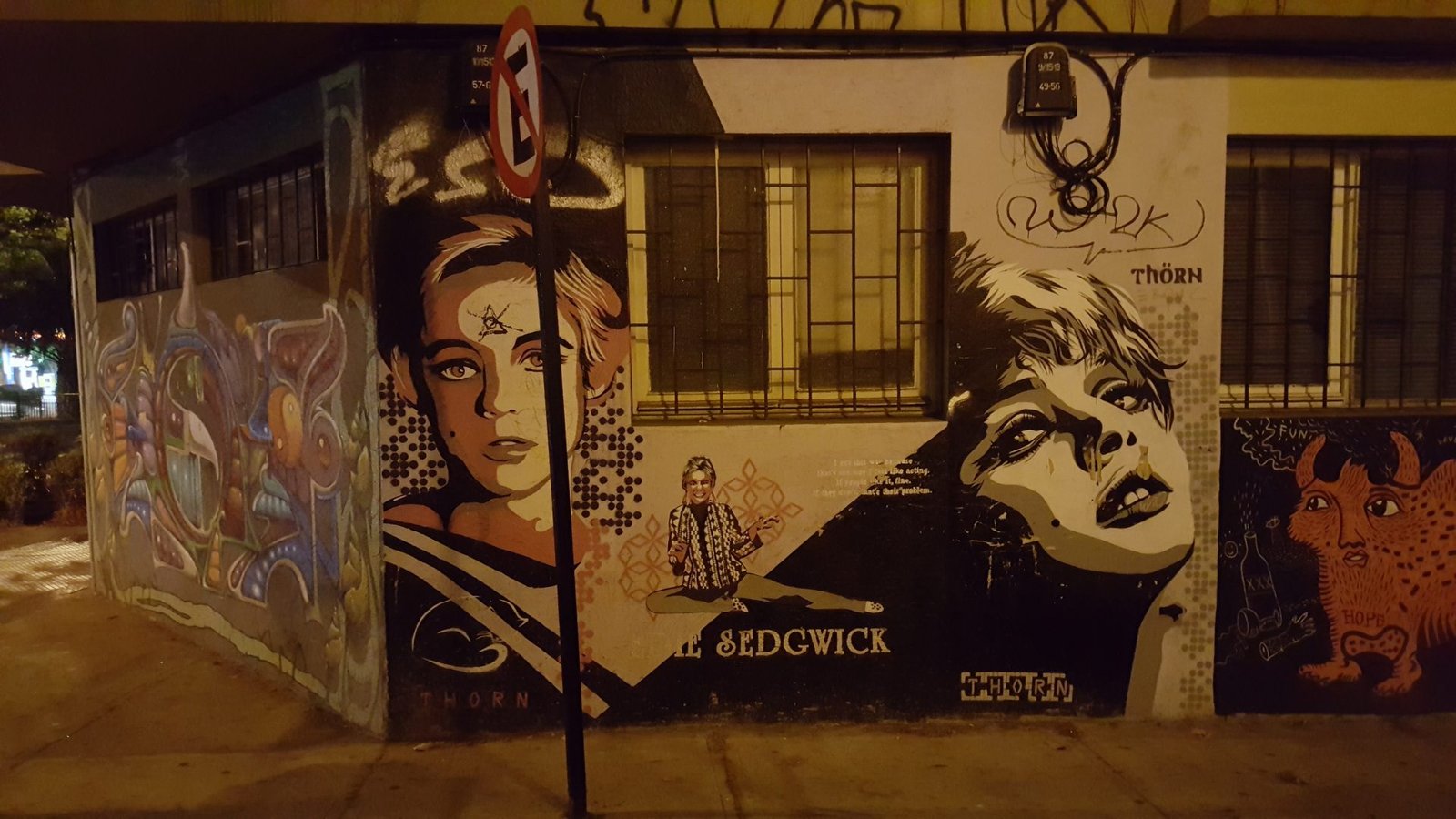
We took it easy in Santiago. We grabbed the free bikes from the AirBnb and rode over to the Bellavista neighborhood, where we trekked up the San Cristóbal hill, said hello to the first of many Jesus statues in South America; had Ramone try chorillana, sopaipillas and completos, drank shitty Cristal beer; strolled around downtown in the shopping district and checked out Santiago's Plaza de Armas.
Santiago was a good starting point, but quickly enough, it was time to move on to our next destination: Puerto Varas.
Going South: Puerto Varas and Frutillar
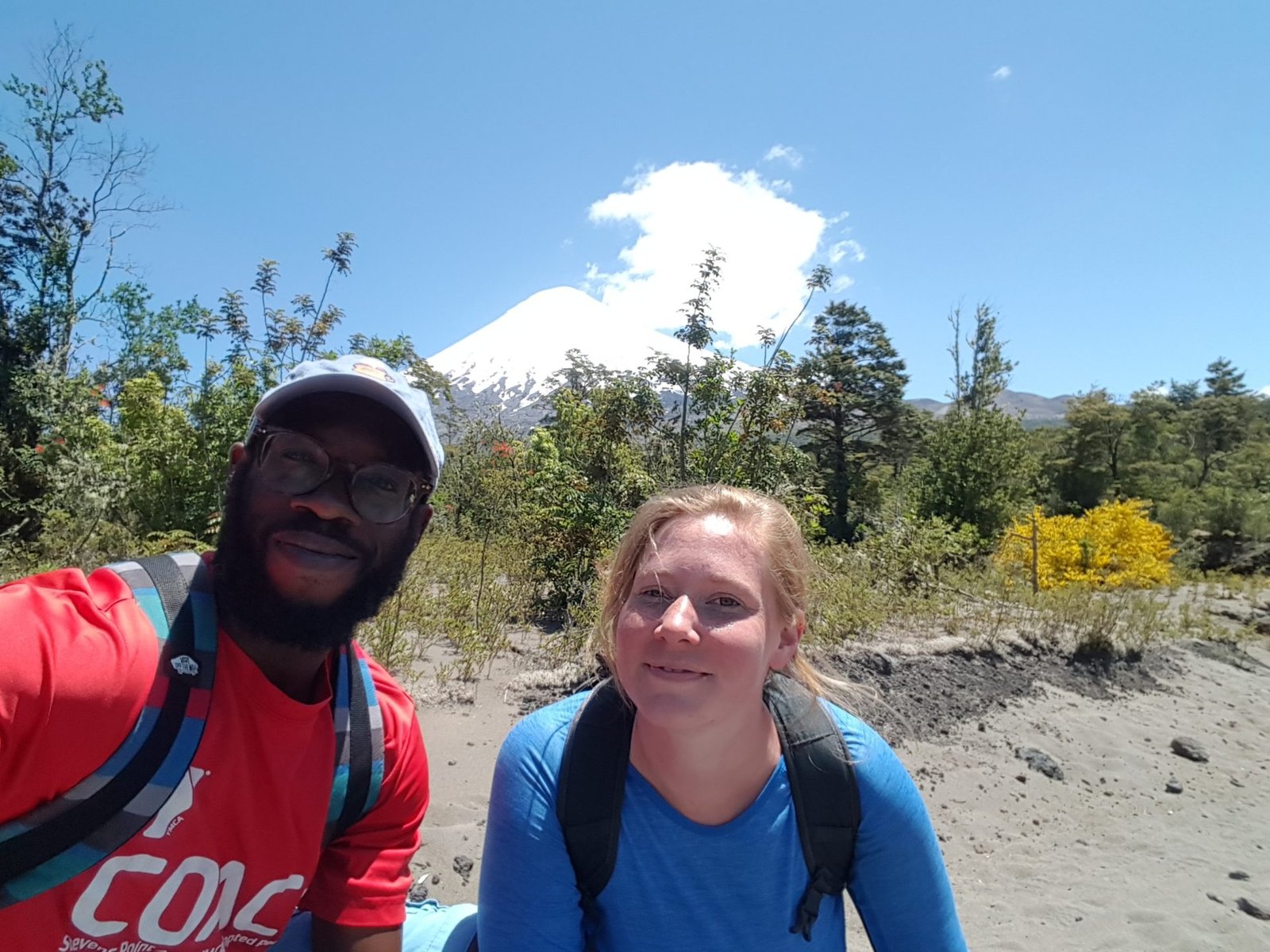
I spy a volcano in Petrohue
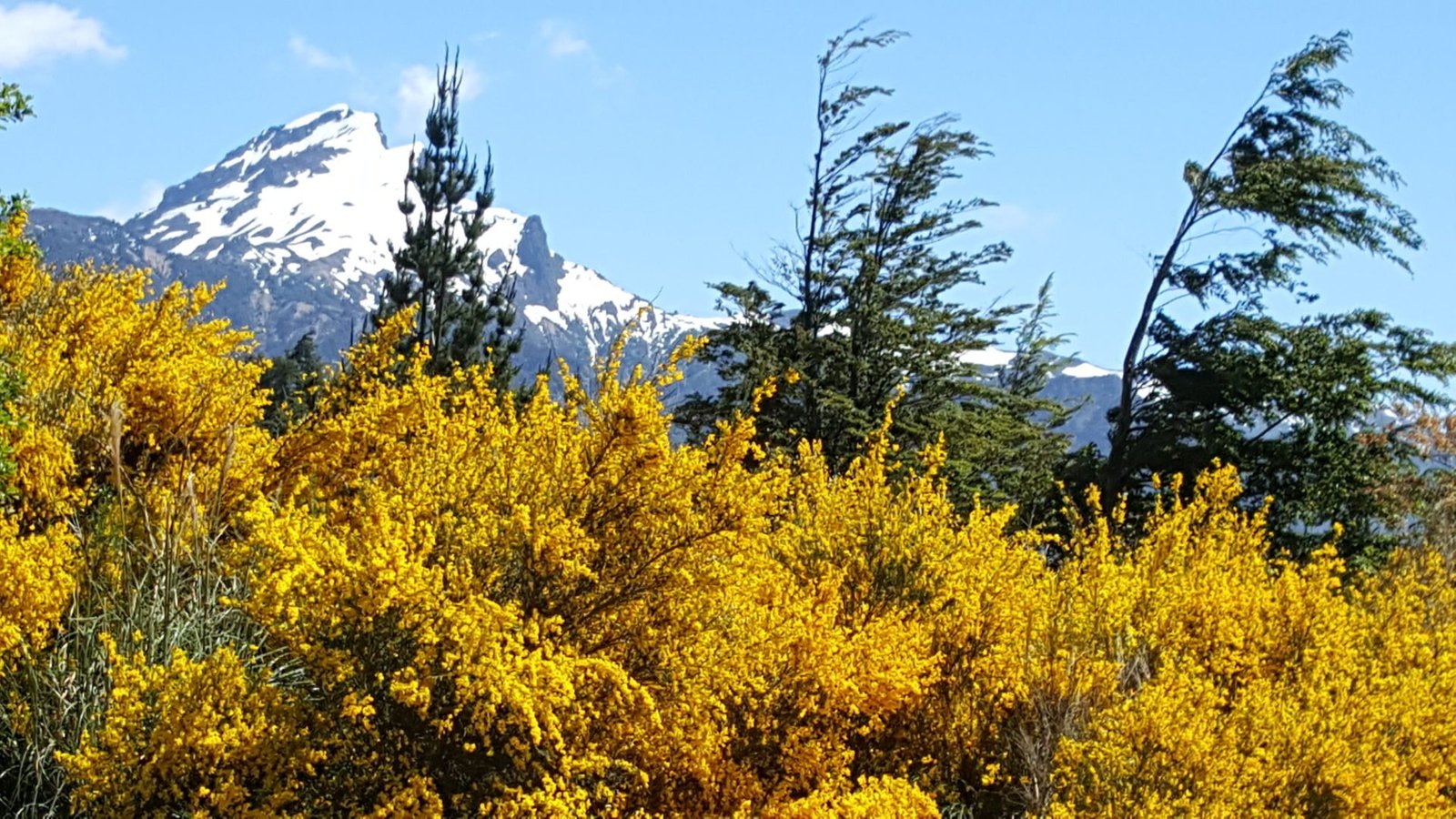
So our idea was: Ramone has to fly into Santiago, as it's the main hub of Chile. Why not first make our way down to the furthest part south that we're going, and then climb our way back since we're going to be heading north to Peru after?
How We Got There
Transportation from Santiago to Puerto Varas:
We snagged a cheap overnight bus from Santiago to Puerto Varas. Many buses don't stop in Puerto Varas and prefer to go directly to Puerto Montt instead, which is considered the "gateway" to the Patagonia region. We took the cheap 'semi cama' seats which only recline slightly; if you want the real deal seat-turned-to-bed you'll have to pay a lot more.
Since we didn't want to spend a ton of money in southern Chile and wanted to prioritize Peru as well, we settled for just seeing the starting point of Patagonia, rather than heading down to el fin del mundo, the end of the world.
We loaded up on to the bus, only to be herded back off again because of a mechanical issue. After about 30 minutes of waiting, they assured us that it was fixed. We were shuttled back on and arrived safely bright and early in the morning.
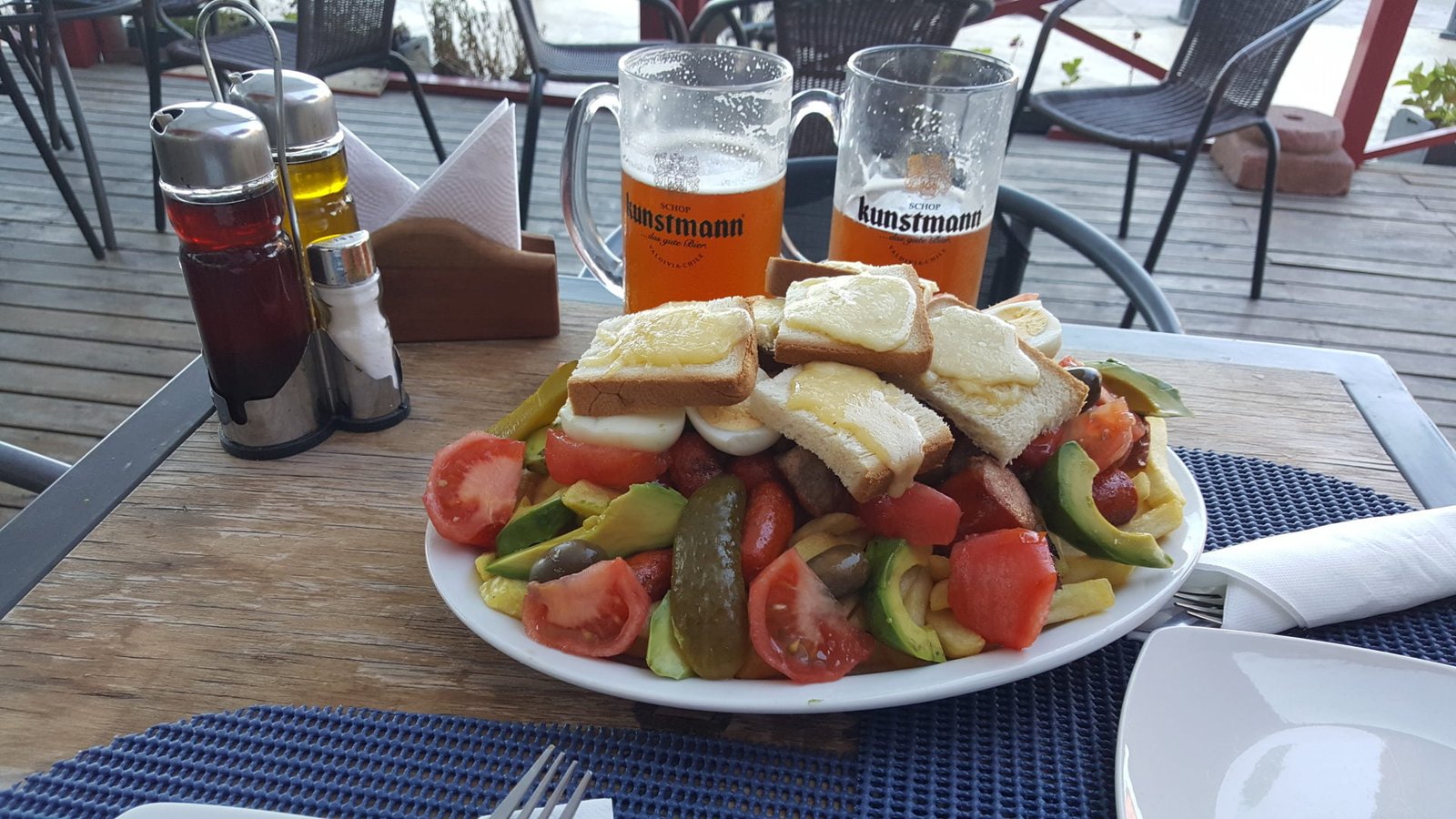
Highlights
We spent about as many days in Puerto Varas as we did in Santiago, and stayed at Hostel Tronco del Alemán in their private room. Puerto Varas is a tiny town, drastically different from Santiago. In the morning it's so foggy that you can't even see the beautiful volcanoes until the sky clears up, around midday.
We went around snapping photos in the morning, admiring the lake, only to realize that we hadn't even been able to see the best part of it until later that day. Look at how different a few hours can make:
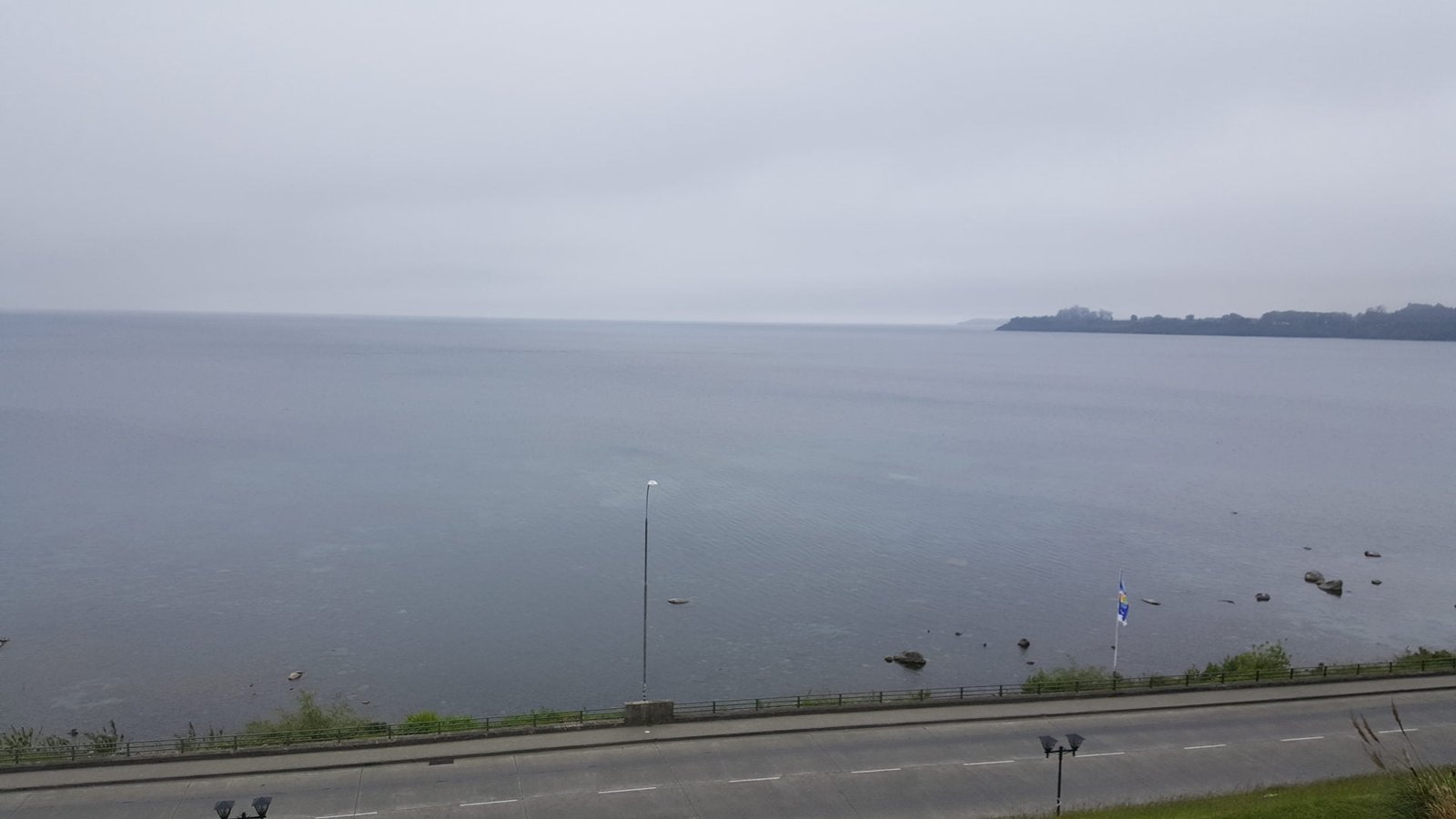
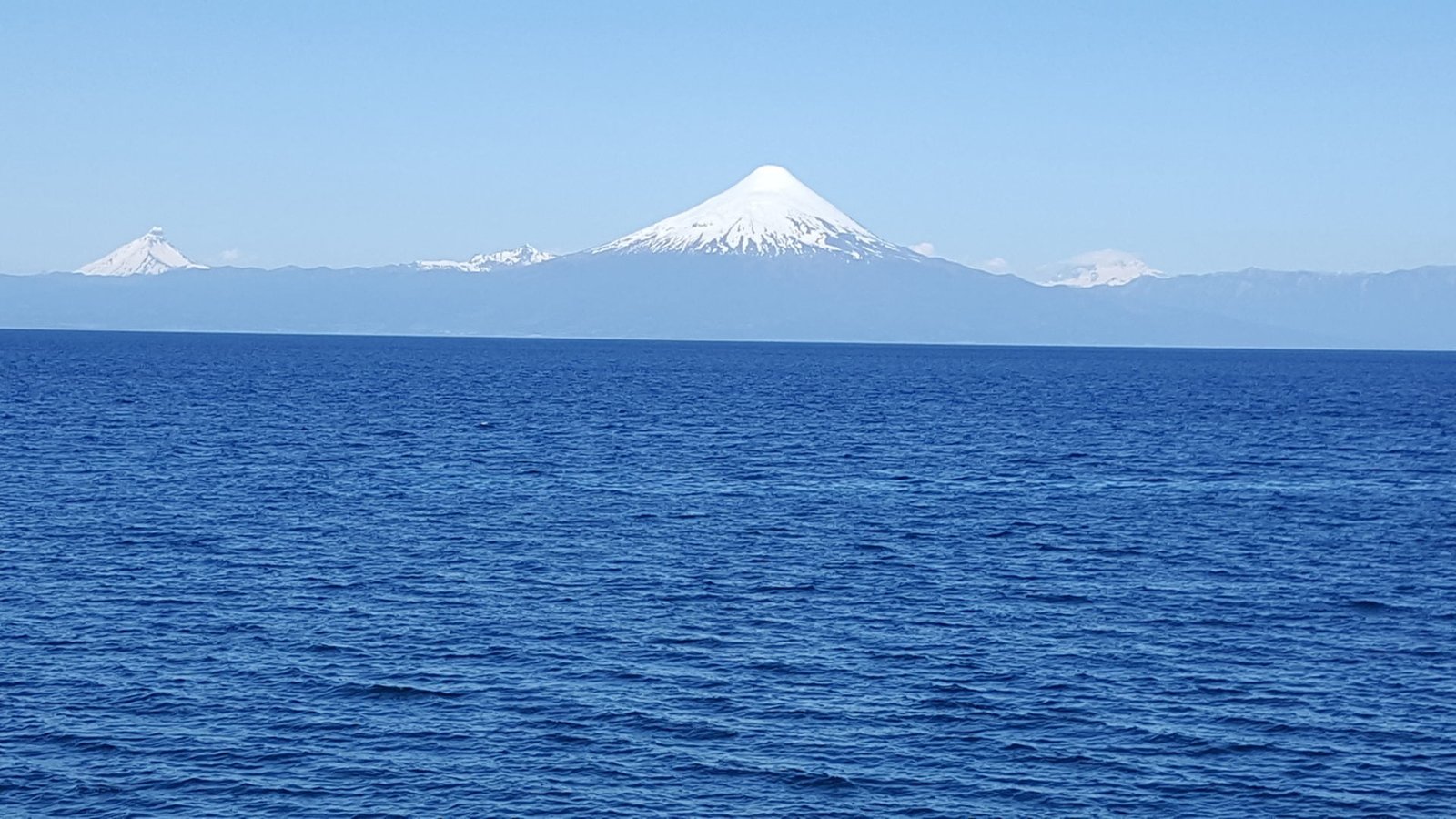
We checked out the local hill, cerro Philippi; ate German-Chilean food and had excellent lattes; took a cheap bus to Frutillar and chilled at the beach for my birthday; and took a public bus to Petrohue, which was incredibly beautiful, and most parts of it were free.
If we had more time, we would've checked out the nearby island of Chiloe, but time was a'ticking. We really wanted to stop by and visit the town known for beer: Valdivia.
Read my full guide on Puerto Varas here.
Región de Los Lagos: Valdivia
This may not be the location that's at the top of everyone's list, but it's worth it. In fact, Valdivia is the spot that I'd most likely consider settling down in within Chile.
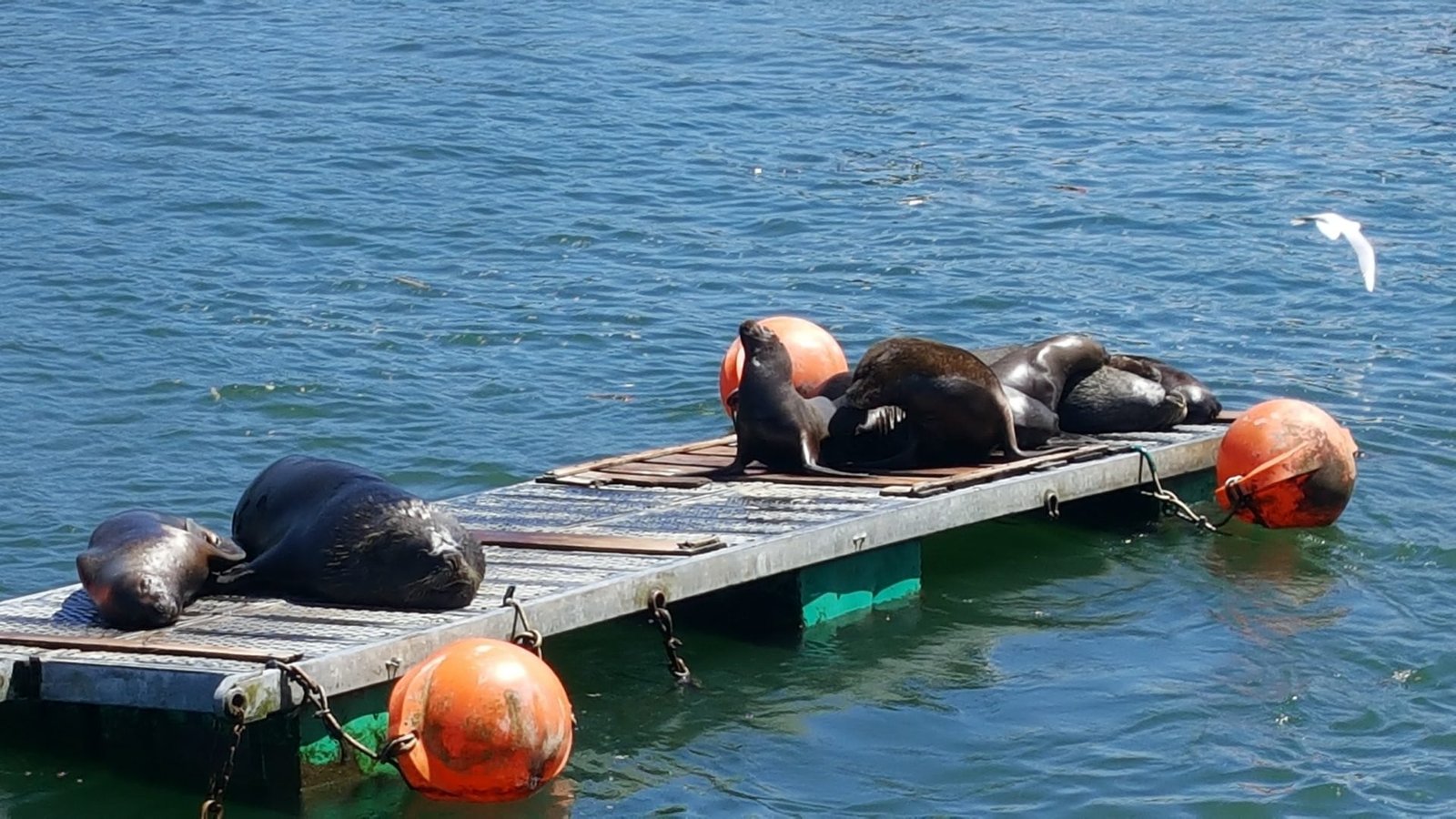
How We Got There
Transportation from Puerto Varas to Valdivia:
A short three hour bus ride from Puerto Varas, the geography is transformative. It goes from mountains and volcanoes to endless lakes and rivers.
Keep in mind that Puerto Varas doesn't exactly have a bus "terminal." Instead, each company is based out of their own location, usually what looks like a simple house, although they're within walking distance of each other. We just went into the first bus company we found, and then they directed us on how to get to a bus company that sells tickets to Valdivia.
Highlights
The best part? Valdivia is home to the most famous brewery in Chile: Kunstmann! You can even try carne cruda, raw beef, there, which of course we did.
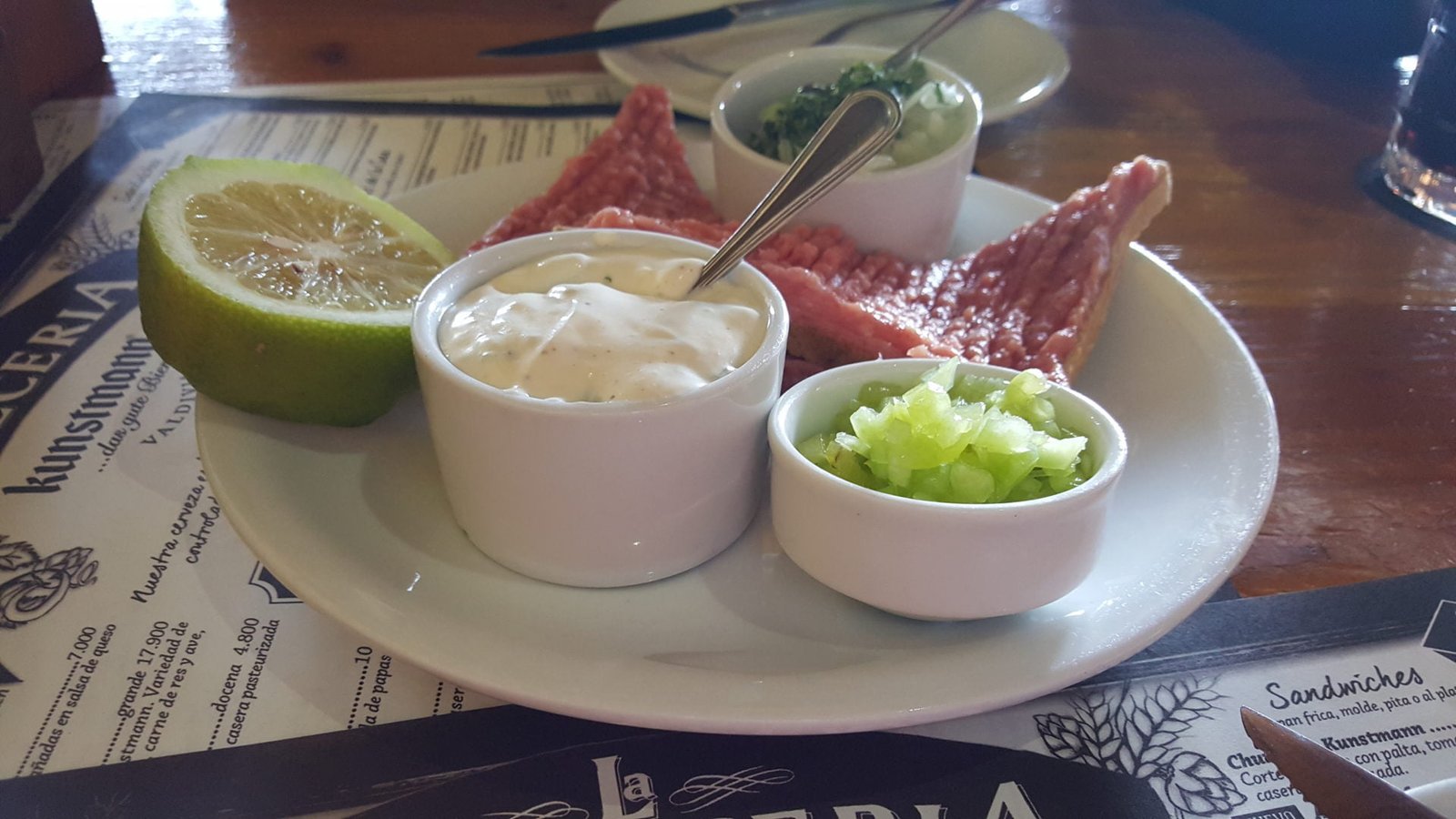
Kunstmann is on the way to Niebla, a small town where the mouth of the river meets the Pacific Ocean. When the Spanish had first conquered parts of Chile, they used Valdivia as a fortress to hold down their keep.
We also checked out another local brewery, Bundór, which is on the Isla Teja, a short walk over a bridge. Just make sure you see Valdivia during the summer months, as it's incredibly rainy and dreary during the winter.
The fish market is also a must-see: there are greedy sea lions that lounge around on little rafts in the river around the market.
Read my guide on Valdivia here.
Settling In: Pucón
Pucón is where we chose to stop, rest, and volunteer on an organic farm for two weeks in exchange for free housing and meals.
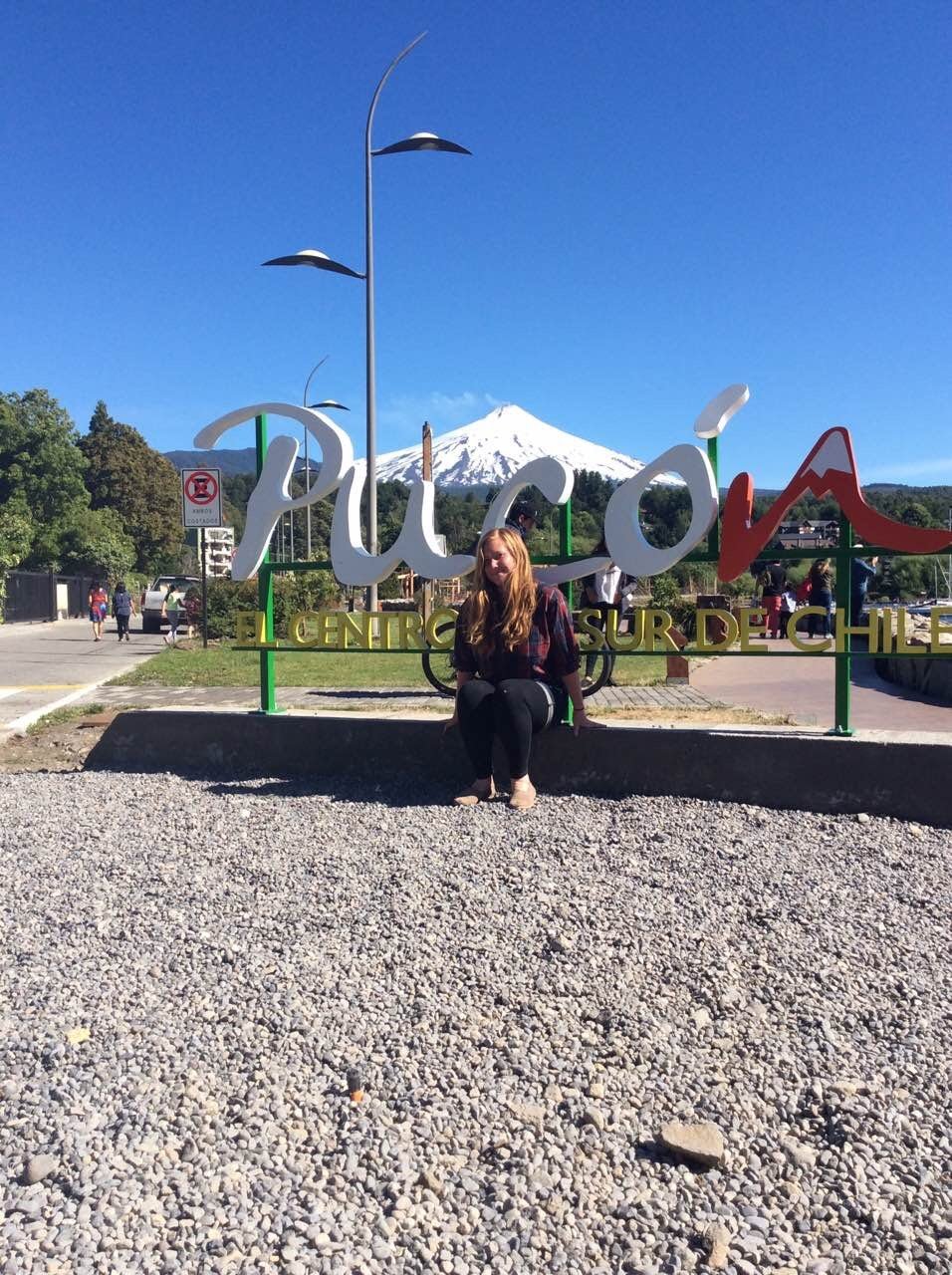
How We Got There
Transportation from Valdivia to Pucón:
If you haven't caught on, bus is the easiest and cheapest way to get around in Chile!
Highlights
We settled into Pucón for two weeks, and volunteered at a farm. The farm was on the outskirts of town, a simple bus ride away (or an even quicker car ride if you're willing to hitchhike). We worked five hours a day Monday through Friday, and had a little cabin to ourselves.
There's so much to do in Pucón. If you're an adventure sports enthusiast, this is the place for you. We went whitewater kayaking, went to the base of Volcán Villarica, and ate delicious burgers (yes! I hadn't had a juicy, beefy burger in so long). Parque Huerquehue is also only a short bus ride away, and has some awesome day hike options.
Pucón is a hub for international travelers, and is home to a lot of expats that have settled in. Many businesses are owned by expats, so there's a wide variety of options here that are hard to find elsewhere. This is the spot where we saw the most amount of foreigners that weren't just passing through.
Learn about our Workaway experience and thoughts here.
Last Stop: San Pedro de Atacama

I'm so glad we didn't skip the desert. We weren't sure if we could fit it in, but if I had known how gorgeous and enticing the desert would be, I would've included it on my must-see list from the get-go.
But since we were heading north anyway to go to Peru, we decided to stop for a few days in San Pedro.
How We Got There
Transportation from Pucón to San Pedro de Atacama:
Total Cost of Transportation: ~50.000 CLP ($75)
Bear in mind that this is a long trip! We arrived in Calama on Christmas Day early in the morning. We took a short taxi ride from the airport to the city proper of Calama. Most of the local bus stations were not running, so we had to wait until 1:30 p.m. to snag a bus to San Pedro.
When we did our research, the overnight buses to San Pedro weren't any cheaper than a quick domestic flight, and so we decided that it was definitely worth it to fly part of the way for this one. Flights were way cheaper from Santiago, rather than a smaller airport further south.
Highlights of San Pedro
Even the drive to San Pedro from Calama was eye-opening. The little town of San Pedro is gorgeous; it's situated in the Atacama Desert, so the houses are made of clay because they almost never get rain there.
Here was where we took our first and only tour during our trip in Chile and Peru. We took a pricey tour (for us; it was 20.000 CLP) to go see the El Tatio Geysers, which were interesting and worth it. We also stopped in a little town and got to see a canyon. Our tour guide was fun, but of course we were constrained to what the group was doing.
The cheapest thing to do in San Pedro is to rent a bike (yes, a bike in the desert!) and take a quick bike ride over to Valle de La Luna, where you can go through it at your leisure. This is not for the faint of heart, though! Buses and buses of tour groups start rolling in at around 4:00 p.m. to see the sunset, so I would advise to make a day trip out of it, although then you have to deal with the heat.
San Pedro is a tourist trap so prices are a little inflated and tour groups are booming. If you do want to rent a car at some point, I think San Pedro would be the place to do it.
Read my 4-Day San Pedro Itinerary here.
Final Thoughts
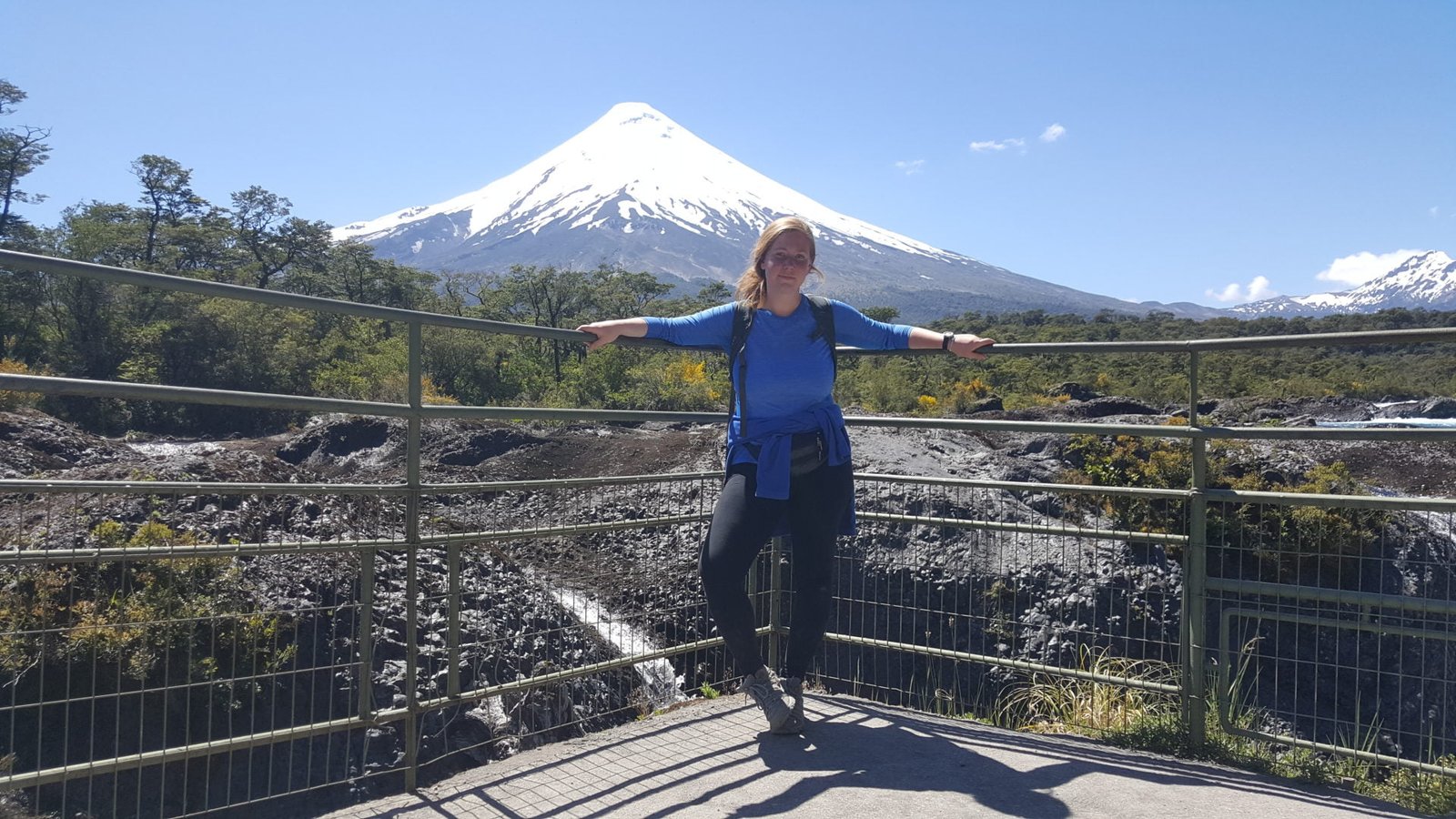
Chile is a gorgeous country. In fact, it won the best country to travel to in 2018 from Lonely Planet. Chileans are welcoming and quirky (expect 4th grade humor from adults), and the landscapes are just breathtaking. And, there are plenty of ways that you can travel throughout this long, thin country without dropping tons of money.
Read Next: How to Travel Peru for 1 Month on a Budget
Liked this post? Pin it!




Subscribe to receive Snook Outta Water's monthly newsletter with exclusive updates and content.

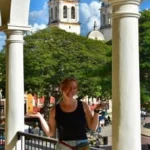

Pingback:Chile: An Overview - Snook Outta Water
Pingback:Should I do a Workaway Program? Everything You Need to Know About Workaway - Snook Outta Water
Pingback:How to Spend 4 Days in San Pedro de Atacama - Snook Outta Water
I’m definitely down for budget travel! :] I’ve never been to Chile but it’d be awesome to explore there (+ Peru) someday! Public transportation + hostel living = the way to go when trying to save money!
Great post! I love how detailed this is. I’ve always wanted to get to South America.
Never been to Chile, this post is giving me major FOMO! Now I got to visit!
Great detailed post!
Thank you so much for sharing this information. It’s really helpful to know what to expect for the costs to start saving. Volunteering on your travels is something we do as well and really enjoyed it.
Wow, this is such a detailed post! Chile is on my bucket list so I will definitely be bookmarking this post to refer back to it.
Chile sounds like heaven! I mean, the mountains, the foods, the desert…it’s just so varied! I thought it would be a much pricer destination, so this is really helpful! I would LOVE to get hiking out in those views. 🙂
Yeah, it CAN be pricy, especially if you’re sticking to the Patagonia region, but there are certainly affordable options. I’m ready to go back and do a ton more hiking as well (maybe with a higher budget, too haha)
You’ve totally hit my Achilles heel with this one. I have a stupid fear of taking buses in places that I’m not familiar with because I’m always super paranoid that I’m going to make a mistake by not paying the right amount, missing my stop, and being stuck out in the middle of nowhere! But I can totally see how it would make a trip much cheaper.
Oh no! Haha unfortunately in most of South America they rely on buses for transit – hard to find trains and flights are only just beginning to become affordable. You could always rent a car, though – would definitely up your budget, but certainly an option (and a really good one for the Patagonia region).
I absolutely how you’ve broken down your explanation of the budget. This is hugely helpful for my hopefully one day visit to Chile. Thank you for sharing